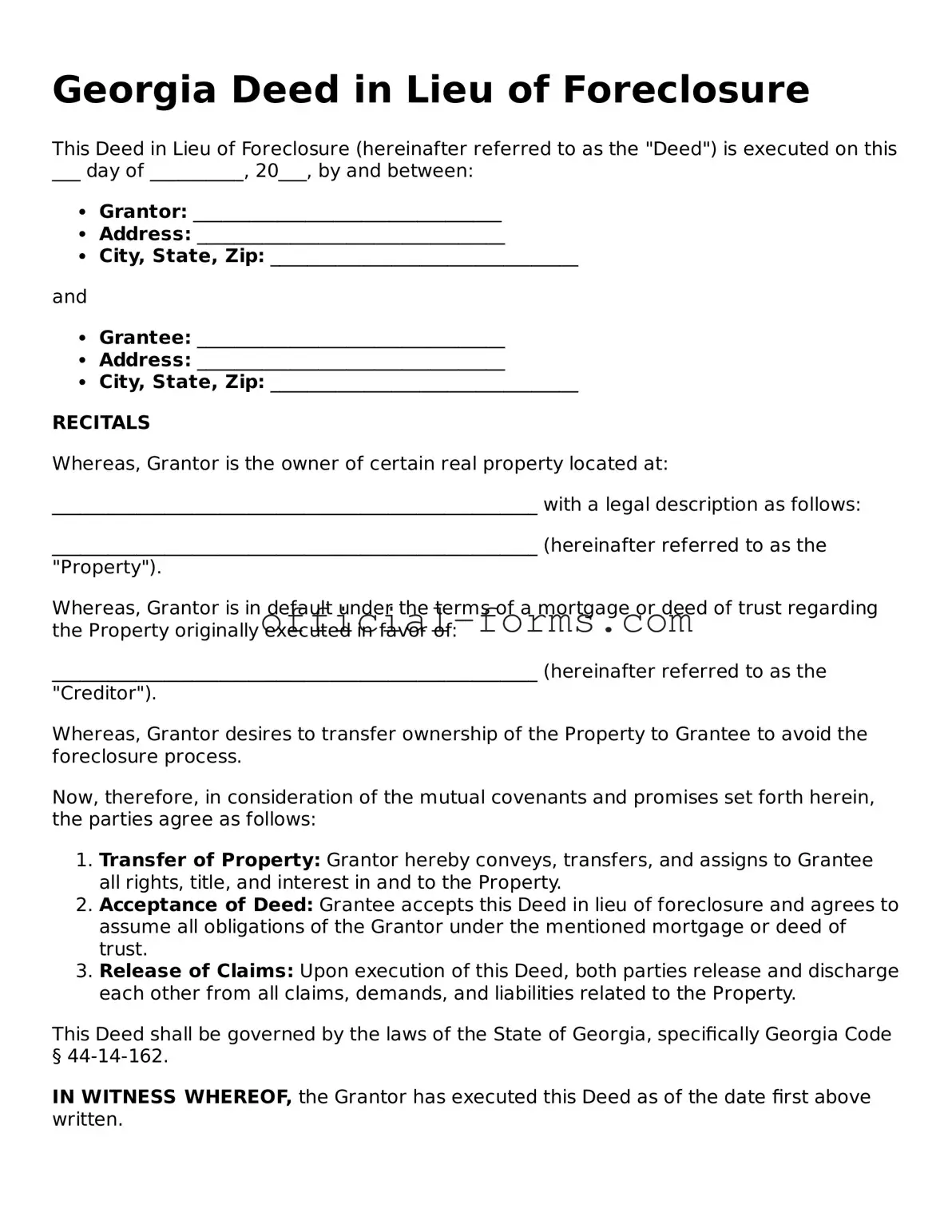Filling out the Georgia Deed in Lieu of Foreclosure form can be a complex process, and mistakes can lead to significant complications. One common error is failing to provide accurate property information. It is essential to include the correct legal description of the property. Inaccurate information can result in delays or even the rejection of the deed.
Another mistake is neglecting to identify all parties involved. Both the borrower and the lender must be clearly named in the document. Omitting a party can create legal issues later, especially if disputes arise regarding the transfer of ownership.
Many individuals also overlook the importance of signatures. All required parties must sign the document for it to be legally binding. In some cases, a witness or notary may also be required, depending on the specific circumstances of the deed.
Inaccurate dates can also pose a problem. The date of execution must be clearly stated and should reflect the actual date when the document is signed. Failure to do so can lead to confusion and disputes about the timing of the transfer.
Additionally, individuals often forget to include any necessary attachments or supporting documents. This may include a copy of the mortgage, any correspondence with the lender, or proof of the borrower’s financial situation. Omitting these documents can hinder the process and may result in rejection.
Another frequent mistake involves not understanding the implications of signing the deed. Some borrowers may not fully grasp that signing a Deed in Lieu of Foreclosure can impact their credit score and future borrowing ability. It is crucial to consider these long-term effects before proceeding.
Lastly, individuals sometimes fail to seek professional advice. Consulting with a legal expert can provide valuable insights and help avoid common pitfalls. Engaging with a professional can ensure that the deed is completed correctly and that all parties understand their rights and obligations.
